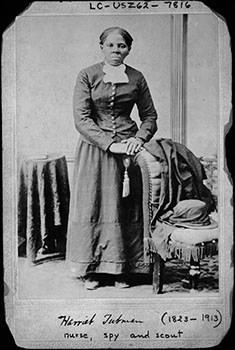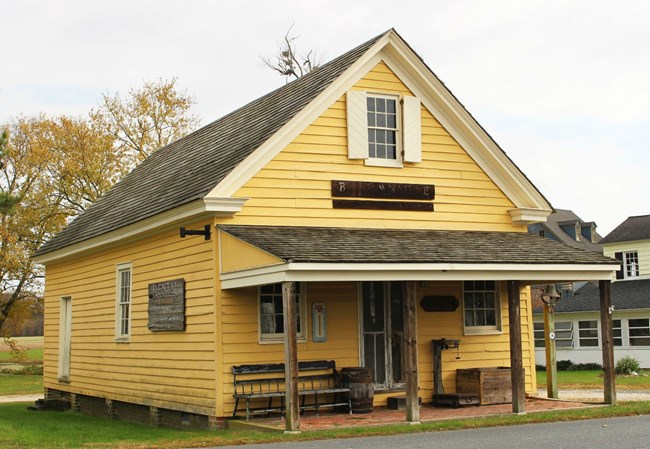Escape from Slavery
In March of 1849, Tubman’s enslaver, Edward Brodess, died. Tubman knew that in order for Brodess’s wife to pay her husband’s debts, she needed to sell some of her slaves. Tubman did not want to be sold away from her family and into the even more brutal conditions of slavery in the deep South. In the fall of 1849, she escaped from slavery alone, and found freedom in Philadelphia, Pennsylvania. In Philadelphia, Tubman made connections and found support among other black and white abolitionists. Although Harriet Tubman found her freedom, she was separated from her family. Between 1850 and 1860, Tubman returned to the Eastern Shore of Maryland 13 times and freed more than 70 family and friends so that they could be free together.
Military Leader
Tubman’s work as a liberator continued into the Civil War (1861-1865). Before the war started, Tubman caught the attention of several white politicians because of her contacts with well-known black and white abolitionists in the North. Massachusetts Governor, John Andrew, heard of Tubman’s successes freeing slaves on the Underground Railroad out of Maryland, and taking them North into Philadelphia and St. Catharines, Ontario, Canada. Andrew believed the knowledge and skills that Tubman gained traveling the marshlands in Maryland’s Eastern Shore would be useful in the marshlands on the coastal region of South Carolina, since the two landscapes were similar.
Tubman arrived in Port Royal, South Carolina in 1862 to help Union generals recruit black troops, serve as a Union spy, and nurse wounded soldiers. Perhaps her most dramatic effort to weaken the Confederacy came on June 1, 1863, when she planned and led an armed raid along the Combahee River, becoming the first woman to do so in U.S. military history. Tubman, Colonel James Montgomery, and the 2nd Carolina Colored Infantry burned several plantations, destroyed Confederate supply lines, and freed more than 750 people from slavery.
Life in Auburn, New York
In 1859, Harriet Tubman bought a house in Auburn, New York from Senator William H. Seward to serve as a home for her family. After the war, women and African Americans continued their fight for equality and voting rights. Tubman became a co-founding member of the National Association of Colored Women that demanded equality and suffrage for African American women. After 1869, Harriet married Civil War veteran Nelson Davis, and they adopted their daugher Gertie. On March 10, 1913, Harriet Tubman died of pneumonia and was buried in Fort Hill Cemetery in Auburn.
Throughout her life, Harriet Tubman was a fighter. Tubman’s legacy continues in society years after her death. During World War II a ship was named in her honor. Aburi, Ghana features a statue of Tubman, and her image appeared on U.S. postage stamps. She is scheduled to appear on the new twenty dollar bill in the year 2020. Tubman’s story speaks compassion and courage that continue to touch the lives of people.
Suggested readings
Horton, Lois E, Harriet Tubman and the Fight for Freedom.
Larson, Kate Clifford, Bound for the Promised Land.
Larson, Kate Clifford, http://harriettubmanbiography.com/
Learn more about Harriet Tubman's life in Auburn, New York from our sister park.
https://www.nps.gov/hart/index.htm



